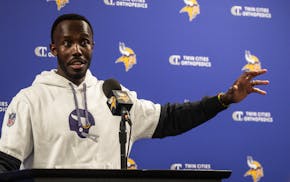The Duke men's basketball program had fallen on hard times, at least compared to its lofty standards.
Entering this season, they had been to only one Final Four since winning the 2015 NCAA men's basketball championship. They had even done the unthinkable in 2021 by missing the NCAA tournament for the first time since 1995.
But this year? They are back atop their lofty perch. The Blue Devils are one of four No. 1 seeds in the Final Four, and even with so many highly regarded teams in the field, they are the favorites to win it all.
Multiple factors have played into Duke's return to elite, but the inescapable No. 1 atop the list is unsurprisingly the thing that suddenly rules so much of college sports: name, image and likeness (NIL) money.
The Wall Street Journal had an extensive look at the small group of wealthy and semi-anonymous donors who make up Duke's collective, paying not only star freshman Cooper Flagg but several presumably high-priced additions from the transfer portal.
It's all perfectly legal in this modern era of college sports, but the article illustrates Duke's unusual approach. It traces the genesis of the collective to March 2023 and three alums identified in the piece:
Jeff Fox, the CEO and founder of the investment firm Circumference Group; Dan Levitan, co-founder of the venture capital firm Maveron; and Steve Duncker, a former partner at Goldman Sachs.
They have chosen to operate in what amounts to "total silence," per the WSJ, which makes them highly unusual in a world where wealthy donors often want their names on buildings or at least in headlines.
But that relative anonymity within a small group has its advantages. Among them: protecting players and keeping at least somewhat hidden how much they are being paid (even if there are good estimates, as this one, suggesting Flagg's NIL valuation is $4.8 million).
The Journal article notes that the collective was only formed two years ago, which was somewhat late compared to other programs. The full influence of its heft and cash wasn't felt until last year's recruiting class, which became this year's star-studded team.
And now Duke is back in the the Final Four, remaking itself as a powerhouse in the shape-shifting world of college sports.
The Blue Devils' golden era was 1986-2001, when they went to 11 Final Fours and won three championships with players who largely stuck around for most or all of their eligibility. They adapted to the one-and-done era. And now they are doing it again in the NIL era.
With revenue sharing poised to hit the books of big-time schools next year — with athletes across all programs, primarily football but also men's and women's basketball among other sports, divvying up as much as $20.5 million per school — the influence of money on rosters will only increase.
The revenue sharing money will come from school budgets. Having an NIL collective featuring donors with deep pockets will help the rich get richer.

Vikings GM talks to the Star Tribune about the team's 2025 outlook, McCarthy's trajectory
David Festa's return to Twins goes south in a hurry

RandBall: After leaving Vikings, Darnold is already under duress in Seattle

Twins ace Pablo López prepares for monthslong absence

